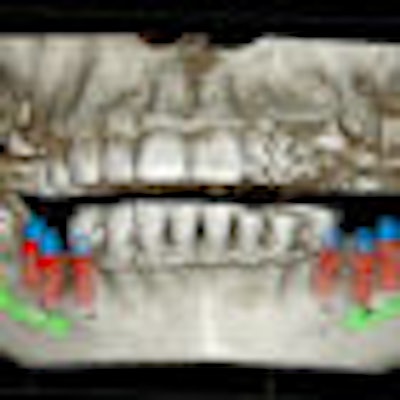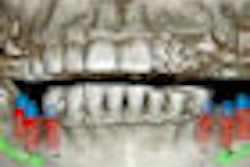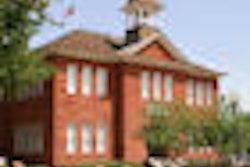
The Health Protection Agency (HPA), the official adviser to the U.K. government on the health effects of radiation, has published a new radiation protection guidance for dental practitioners using cone-beam CT (CBCT).
Two years ago, the HPA's specialist dental radiation team created a working party to develop guidance on using the technology. At the time there was no specific guidance on the use of dental cone-beam CT equipment, so it was unclear how existing radiation protection legislation applied to its use. The expert group included HPA dental and medical radiation protection staff, representatives of the British Dental Association and British Society of Dental and Maxillofacial Radiology, dentists, regulators, medical physicists, and academics.
Radiation doses to patients and potential doses to employees and other persons arising from the use of dental cone-beam CT, although lower than from medical CT equipment, can be significantly higher than from conventional dental radiography equipment, the HPA noted. The aim of this publication is to provide definitive guidance to enable all persons involved with dental cone-beam CT equipment to work with it safely and in accordance with U.K. radiation protection legislation.
The new guidance sets out the following:
- What dentists should do before acquiring a cone-beam CT scanner, including choosing suitable equipment, ensuring staff are adequately protected, and making sure rooms where the equipment will go are specifically designed for the technology
- How existing regulations apply to the use of cone-beam CT
- Standards that dental cone-beam CT scanners should be tested against to ensure they work correctly and are capable of keeping patient doses as low as practicable
- The training that dentists and other users will need to enable them to use the new technology properly
"Cone-beam CT is a new and useful tool for dentists," said John Cooper, director of the HPA's Centre for Radiation, Chemical, and Environmental Hazards, in a press release. "However, like any x-ray equipment this technology utilizes radiation and therefore there are risks. I am sure that the detailed and thorough work undertaken and published by the HPA will play an important role in ensuring that doses to patients are effectively controlled and that all others involved in the use of this technology, dentists and their staff, are well protected."
The first advice to come from the working party was published on the HPA website in summer 2009. A further advisory document was published in March of this year.
According to the HPA, a scan from a dental cone-beam CT unit can deliver a dose of between 0.048 and 1.1 millisieverts (mSv) to the patient, depending on the nature of the examination. A conventional dental x-ray will deliver a dose of between 0.01 and 0.02 mSv. Those undergoing a medical chest x-ray will receive a radiation dose of about 0.02 mSv, and those undergoing a medical CT scan of the head will receive about 2 mSv.
Copyright © 2010 DrBicuspid.com



















